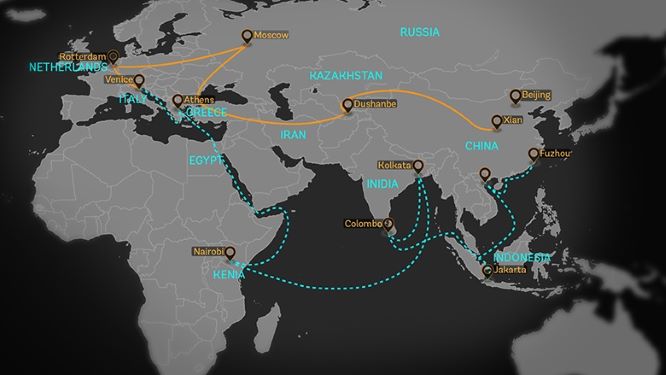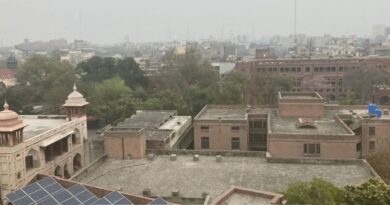China’s BRI Could Raise Temperatures by 2.7°C and Jeopardize Paris Targets

China’s gargantuan global infrastructure projects, which have a massive network of ports, railways, roads and industrial parks throughout Asia, Africa, Europe and the Middle East, threatens to derail the climate targets that the member countries had mandated in 2015.
Since 2013, China has been pushing and defending its Belt and Road Initiative (BRI) project to promote regional connectivity and globalisation. There are two parts: a silk road economic belt between China and Europe via Eurasia and a maritime silk route between Mediterranean, Africa and of course, China.
While China has been the forefront profiteer and benefactor of the BRI, it has met with criticism too. Many countries like Sri Lanka and India call the massive project a ‘problematic debt-trap diplomacy’.
A report by Beijing based Tsinghua Centre for Finance and Development highlights that without green policy controls, the $12 trillion program in carbon-intensive development would compromise the Paris goals.
This means that carbon levels will shoot to more than two times, which are needed to keep temperatures well below 2°C.
“If B&RCs (Belt and Road countries) follow historical carbon-intense growth patterns… it may be enough to result in a 2.7 degree path, even if the rest of the world adheres to 2-degree levels of emissions,” the report said.
It modelled the effects of different approaches to the development of mega ports, pipelines, train lines and highways in 17 BRI countries. It found that countries such as Russia, Iran, Saudi Arabia and Indonesia would need to lower carbon emissions 68 percent by 2050 compared to current trajectories in order to keep the world on course to 2°C of warming.
“We have a business-as-usual scenario that says if you continue the way you are then even if every other country on the planet — which includes US, Europe, China and India — goes on a 2C pathway, this is still going to blow the carbon budget,” said Simon Zadek, senior visiting fellow at the Tsinghua Center.
The 126 countries in the BRI region now account for 28 percent of global emissions, but on their current trajectory, that could rise to 66 percent by 2050, researchers, led by Ma Jun, a special advisor to China’s central bank, said.
China has promised to decarbonize its energy system but has continued to approve and finance coal projects, using $1 billion in “green finance” to fund coal-fired power projects in the first half of 2019. According to Greenpeace, China has also invested in 67.9 gigawatts of coal-fired power in Belt and Road countries since 2014, compared to 12.6 GW of wind and solar. China has also been heavily criticized for investing in overseas coal-fired power projects using polluting technology no longer permitted at home.
The study estimated that more than $12 trillion in infrastructure investment would need to be “decarbonized”, and called for safeguards to ensure existing low-carbon technologies and practices were implemented, although even that might not be enough to meet 2050 goals.
Image Courtesy: World Bank




